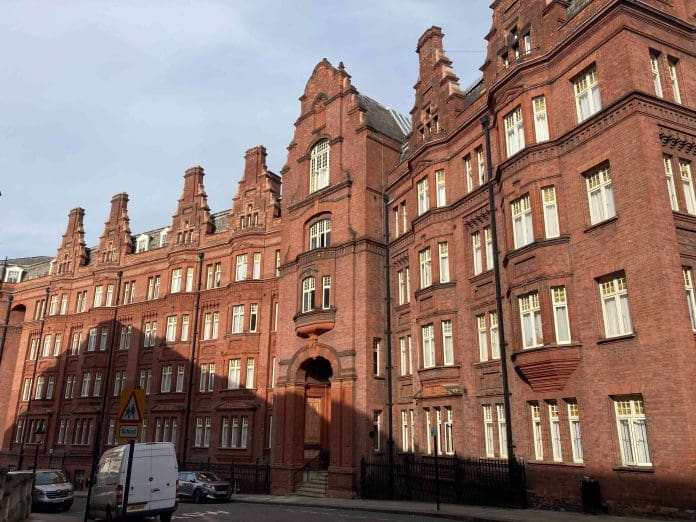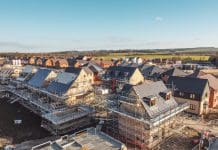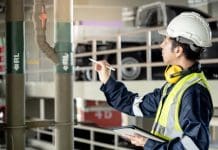Pick Everard have been selected to conduct a survey of, and deliver a sustainability upgrade to the Grade II listed building in London
A condition and sustainability survey has been conducted in Queen Alexandra’s House in order to maintain its heritage while boosting sustainability.
The building is located in the Knightsbridge conservation area, close to the Royal Albert Hall, and has historically operated as the women’s student accommodation for the Royal Colleges of Music, Art, and Science.
Pick Everard was appointed to report on the building’s condition
Due to the age of the building, an in-depth assessment of the condition and sustainability opportunities was needed.
Pick Everard was selected to deliver the assessment, produce an ongoing maintenance and capital works plan, a costed schedule of works, and propose enhancements to the building’s environmental sustainability and energy performance.
Having assessed the building, Pick Everard grouped the recommended remediations into projects that can be delivered in between terms while the building is empty, and ensuring the building is not out of use for any longer than it needs to be.
The survey was submitted to the Board of Trustees at Queen Alexandra’s House with the recommended remediations that will maintain the property’s unique historical character and improve its energy performance.
Pick Everard employed “a holistic, whole building approach” to the heritage building
Matthew Appleton, strategic account director at Pick Everard, said: “From our detailed examination of the building structure, fabric, and the existing issues, it was clear that system upgrades were required. After carefully considering fabric improvements, our team ensured the recommendations maximised return on investment, and improved the environmental performance while enhancing its heritage significance. All of which aligned with the Board of Trustees aspirations to provide modern, flexible and sustainable accommodation for their heritage asset.
“Utilising our team’s understanding of the historic built environment, we ensured our recommendations for remediation works and energy efficiency measures were appropriate within the context of a listed building in a conservation area. Our team took a holistic, whole-building approach and provided further recommendations, such as draught proofing and insulation to maintain ventilation and breathability.
“This carefully considered approach to sustainably retrofitting heritage assets, as demonstrated at Queen Alexandra’s House, is essential to helping our clients achieve their sustainability targets.”
Martin Hadland, trustee of Queen Alexandra’s House, said: “We chose Pick Everard because of their expertise in condition surveys, their experience with historic buildings, and their pragmatic approach to sustainability within challenging protected base structures. Its team was properly integrated, and the comprehensive output allowed us to make informed choices about planning future works. We were very happy with the outcome and look forward to working with the Pick Everard team again.”
Retrofit projects a priority for London
In March, the City of London Corporation launched a retrofit toolkit in co-operation with Purcell, in order to give the owners of heritage buildings tools to adapt their buildings for sustainability.
The toolkit was launched at a ‘Retrofitting the City’ event and especially had the Square Mile in mind, with over 600 listed buildings, 28 conservation areas, 48 scheduled ancient monuments, and four historic parks, retrofit in London poses a significant challenge.
Earlier this month, The Natwest-group also released statistics suggesting that retrofit is in high demand, as they launched a skills programme in co-operation with the Supply Chains Sustainability School. In the first year, the skills programme engaged 4,668 professionals, saw 1,844 companies participated, 2,108 e-learning resources were downloaded, and 693 training needs assessments were completed.
Retrofitting buildings is a major concern, as 40% of the UK’s carbon emissions are from buildings. The UK is part of the Paris Agreement and intends to be net zero by 2050.














